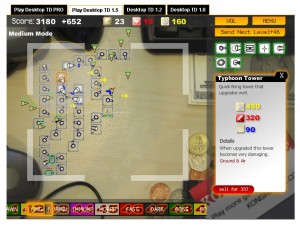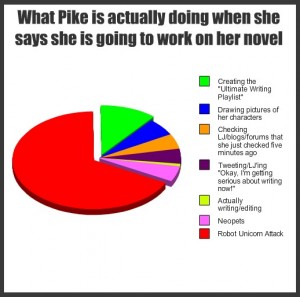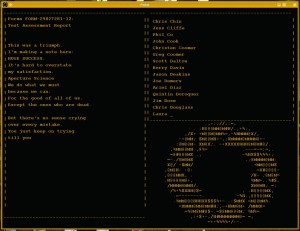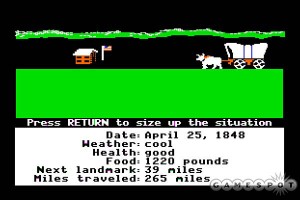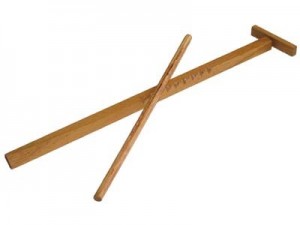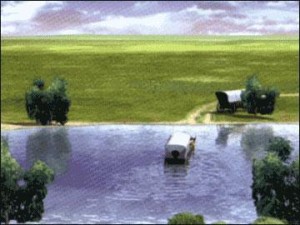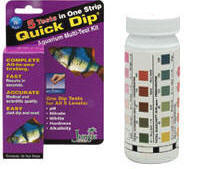 Water Testing is one of the most important parts of keeping an aquarium. One thing that I think it is important to know, though, is that water testing goes just beyond deciding if a certain value is “good” or “bad”. A water test can tell a good aquarist a variety of things about your tank– for example, how old it is, how frequently you perform water changes, and whether or not your tank is overstocked. In this post, I’m gonna show you some of the tricks of the trade! *flexes fingers*
Water Testing is one of the most important parts of keeping an aquarium. One thing that I think it is important to know, though, is that water testing goes just beyond deciding if a certain value is “good” or “bad”. A water test can tell a good aquarist a variety of things about your tank– for example, how old it is, how frequently you perform water changes, and whether or not your tank is overstocked. In this post, I’m gonna show you some of the tricks of the trade! *flexes fingers*
To Start – Gather Your Materials: Test strips frequently (though certainly not always) come on two different strips: one for ammonia, and one for everything else. The reason is because the ammonia strip has to be swirled in the water for ten seconds and the other one just needs a quick dip. I frequently run across people who think they’re saving money by only buying the 5-in-1 test strip and not bothering with the ammonia. Bad idea. Unless you both a.) have had your tank for a while and b.) know what you’re doing, you need the ammonia test strip. Having both sets is the only way to get a really clear indication of the health of your tank.
Test!: Scoop enough water out of your tank to dip the test strip in. Ideally this water isn’t particularly contaminated (i.e., the fish were just fed, or a dead fish has been sitting in it for more than a few minutes). Time is of the essence because a lot of the time, these tests will begin to skew if you let them sit for a more than a minute or two. The ammonia test, in particular, is meant to be read immediately. My normal strategy here is to dip the 5-in-1 test and then set it aside, then swirl the ammonia test and read it immediately, and then read the 5-in-1 test.
Ammonia: An ammonia buildup is the first step of the nitrogen cycle that happens in every fish tank, and is very toxic to fish. It means that there isn’t enough good bacteria in the tank yet to convert the ammonia to less toxic forms. High ammonia and low nitrites/nitrates is a dead giveaway that either the tank is new, or the fishkeeper just did a massive 100% water change (which I don’t recommend doing, by the way). If you have high ammonia, don’t panic, it happens to pretty much everybody. The best way to get rid of it is through a water change. I know there are tons of chemicals on the market that say they will get rid of ammonia. That’s keyword for “This product will bind ammonia to a nontoxic form which is a bandaid fix because you’ll wind up with high nitrates later.” That’s why I recommend water changes.
If you have high ammonia, chances are it’s because you’re still cycling your tank. I tell everybody to do about a 25% water change every other day for the next few weeks. There’s a good chance this will get you through this phase just fine.
Overstocking your tank and overfeeding will also cause ammonia issues (doing both in a new tank is a deadly combination and practically guarantees fish health issues– this is why so many newbies have problems).
If you’ve had your tank for years and years and you have chronic ammonia issues and we’ve ruled out all other causes, then there is a chance that there is chloramine in your city’s water, which is a big giant pain and typically means you should fill your tank with distilled water. Hopefully you don’t have to deal with that, though.
Nitrite: High nitrites are the second step in the aquarium tank cycling process. Usually someone with high nitrites is also testing out to have either high ammonia or high nitrates, signifying how far along you are in cycling. (If all three are high then you have an issue.) It is still very toxic to fish. It can be remedied the same way ammonia can: water changes. You can also add a bit of aquarium salt to the water, which helps the fish’s gills to block nitrite absorption.
The nitrite phase usually does not last as long as the ammonia phase does and is a good indicator that the water you are testing has been established for a few weeks.
Nitrate: Nitrate is the final step of the aquarium nitrogen cycle. If you are testing out at little to no ammonia/nitrites but you have a decent buildup of nitrate, then congratulations, your tank is cycled! Water testing out this way tells me that the tank has been established for at least a month.
Most freshwater fish are relatively tolerant of nitrate but in my experience, while they do okay with some nitrate in the tank, they don’t thrive unless it’s as low as you can make it, which is another reason why I advocate continuing your frequent water changes even past the cycling process. (Also note that certain types of “sensitive fish” cannot tolerate as much nitrate as hardier ones. If your tank is established but you are still having fish issues, nitrate is the first place to look.)
Nitrate is removed from your tank via (say it with me now) water changes. This is why it is recommended that you perform a water change at least once a week, or if you’re Pike, multiple times a week. You really cannot get out of doing water changes entirely. Having a massive filtration system, live plants, and an understocked tank can really reduce the amount of water changes you have to do, but you will always have to do them at least to some extent.
If you do frequent water changes and continue to have chronic Nitrate issues then it probably means your tank is overstocked, you’re feeding too much, or both. (See all the magical things test strips can tell you?)
Nitrate is also algae food. When people come in and talk to me about serious algae issues, I usually tell them to scrape it off and then start doing tons of water changes. People hate me for it, but I’m just telling it like it is.
Note: as an aquarium specialist I typically consider ammonia/nitrite/nitrate to be the “big three” and the cause of about 85% of the fish issues I see in the business. I’m telling you this because I see tons of people panicking about things like pH when they probably should be worrying about ammonia/nitrite/nitrate.
Moving on!
Hardness: This is one of those things that rarely causes issues and probably shouldn’t be messed with. Most freshwater fish in the hobby are adaptable to a wide range of water hardness. Really the only time you should be concerned with hardness is if you’re dealing with specific fish like discus (who like soft water) or African cichlids (who like harder water) or if you are moving fish from a really-soft environment to a really-hard environment or viceversa.
Chlorine: Good news and bad news for this one. The bad news is that Chlorine is extremely toxic and will kill fish in minutes. The good news is that there’s so much hype about adding water conditioners and the like that you will probably never have a chlorine issue. In two and a half years of testing water, I’ve never seen a chlorine issue. (Actually I lied, I saw someone’s chlorine off the charts once, but every single other thing on the test strip was also off the charts. That person’s water was, uh, special.)
Alkalinity: This is another thing that you probably never have to mess with. Most fish are tolerant of the entire alkalinity spectrum and unless you’re doing something really specific, like breeding, don’t mess with it.
pH: pH is one of those buzzwords that everyone remembers from high school chemistry and because of this, everyone overreacts when they hear it and go to great lengths to eradicate any “pH issues” in their aquarium. And therein lies the problem. So, here’s the deal:
Unless you’re doing something difficult (like breeding, or trying to keep a notoriously finicky fish), don’t mess with the pH.
Most tropical fish are very tolerant of pH, so long as it’s stable. They don’t care if it’s high, they don’t care if it’s low, they don’t care if it’s exactly 7.0, but they do care if it goes back and forth and back and forth and back and forth. This is why attempting to “fix” pH issues usually causes more problems than the pH itself does.
If your pH is extreme (i.e. lower than 4 or higher than 10), then by all means, fix your pH. But I’ve never ever seen any water tests that extreme. Most of the time it’s between 6 and 8, which is fine. Just sayin’.
And there you have it– how to decipher the mysterious aquarium test strips! *bows*


